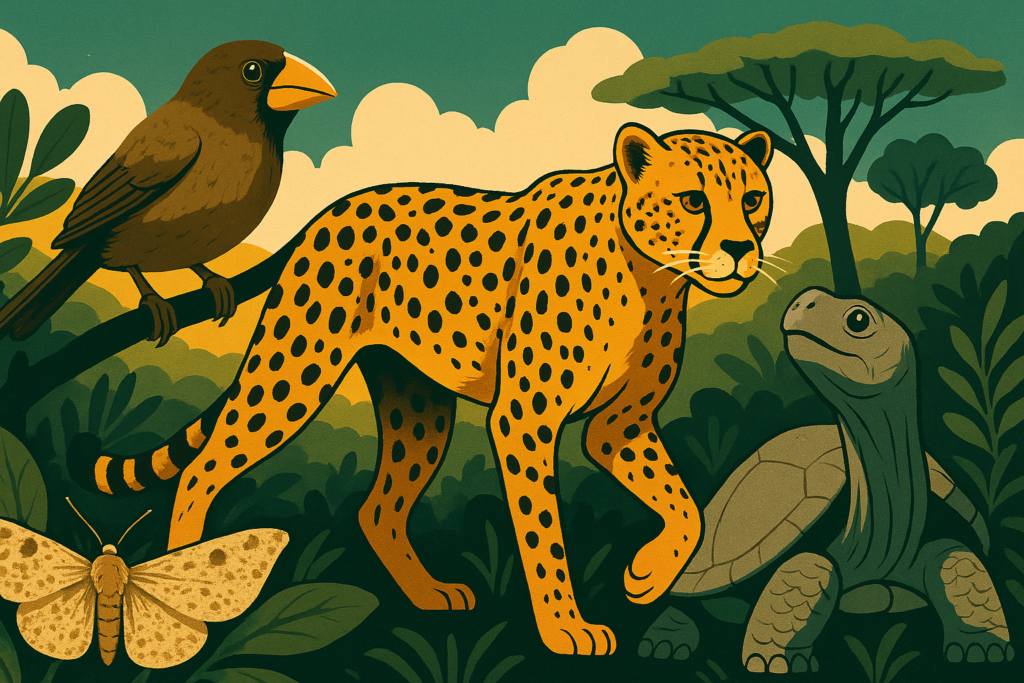
Imagine a reality show—not on TV, but in the wild. No script. No judges. Just survival, struggle, and some really weird beaks.
Welcome to Natural Selection—a concept cooked up by Charles Darwin (yep, the bearded guy on the £10 note) that’s been running since, well… life began. If you’ve ever wondered why cheetahs run like sports cars or why some birds look like fashion experiments gone wrong, you’re in the right place.
So, What Is Natural Selection?
Let’s put it simply: Natural Selection is nature’s way of picking favorites—but those “favorites” are usually the ones best at staying alive and making babies.
And no, it’s not about muscles or charm. It’s about tiny advantages—maybe sharper eyes, a longer neck, or just better timing—that help an organism survive better than its neighbors. Those little advantages? They get passed on.
Over time, boom—new species, wild adaptations, and the incredible diversity of life we see around us.
Why Did Darwin Think of This?
Okay, flashback to the 1830s. Darwin hops aboard the HMS Beagle, takes a field trip to the Galápagos Islands, and starts noticing weird stuff—like birds with wildly different beak shapes on different islands.
He starts piecing it together: maybe these birds all started from one species, but had to adapt to different environments. Nature “selected” the beak that worked best in each place.
Mind = blown. That’s when Darwin starts writing his most famous book: On the Origin of Species.
Natural Selection in Action (AKA: Evolution’s Highlight Reel)
Let’s run through some famous examples, shall we?
- Peppered Moths: Before industrial pollution, they were white to blend in with trees. After pollution? The black ones survived better. Nature switched sides!
- Darwin’s Finches: Each island had a different “flavor” of food—nuts, seeds, bugs. Beak shapes adapted like nature’s Swiss Army knife.
- Antibiotic Resistance: Bacteria don’t mess around. We invent antibiotics, they evolve resistance. It’s an arms race, and they’re winning more rounds than we’d like.
The Science-y Bit (Without Killing the Vibe)
Natural selection has a few key ingredients:
- Variation – Individuals in a species are a bit different (just like people).
- Heritability – Those differences can be passed on to offspring.
- Differential Survival – Some traits help you survive better.
- Reproduction – Survive, and you might get to pass those traits on.
Basically: Live, thrive, and leave offspring that look like you—but better at surviving.
But Wait—Is It Always About “The Strongest”?
Nope. Sometimes, it’s the sneakiest, the best camouflaged, or even the most charming (ask peacocks). “Fitness” just means you’re good at making it to the next generation—not lifting weights.
Quick Recap Like You’re Scrolling Instagram
- Natural Selection = Nature’s editor. Keeps what works.
- It’s slow. Like, really slow. But powerful.
- It’s not “random”—mutations are random, but selection is the opposite.
- It’s still happening. Right now. Around you. In you.
Final Thoughts: Nature’s Tough Love
If nature had a catchphrase, it might be: “Adapt or… fade into a fossil.” Sounds harsh, but that’s what makes life so mind-blowingly amazing. Every organism, from funky fungi to towering trees, got here by surviving some version of this epic, relentless filter.
So next time you swat a mosquito or marvel at a cheetah chase on a nature doc, remember—you’re watching billions of years of natural editing in motion.
